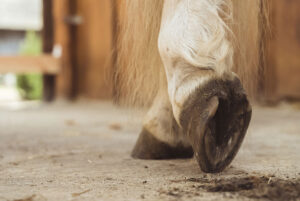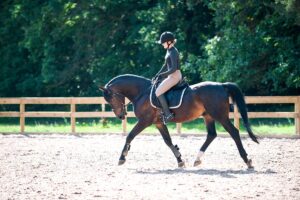Footing Surfaces and Loading on Equine Legs

“Numerous variables affect the interaction between the hoof and the ground surface, and any of these variables could contribute to an increased risk of injury in horses,” said Alexis Szpakowski, a recent bachelor of science graduate from the University of Guelph, in Ontario, Canada.
Those variables include not only the footing’s qualities but also the horse’s weight, the direction he’s going (straight or on a curve), the direction of turn, the lead he’s on, and multiple other factors, according to Szpakowski and her colleague Danielle Halucha, a master of science candidate also at the University of Guelph. Both scientists presented their work in separate presentations during the 15th annual conference of the International Society for Equitation Science (ISES), held Aug. 19-21, 2019, in Guelph.
When a hoof hits the ground, it doesn’t just touch and go, the researchers explained. It has an initial impact that causes the hoof to brake and experience internal vibrations that can extend up the limb. The hoof slides briefly before reaching a full stop with the horse’s mass centered over it. In a gallop, the horse’s entire body weight, multiplied in force due to the combination with speed, bears down fully on a single hoof during this midstance, which includes a push-off to propel the entire horse forward. As the body mass passes in front of the limb, the hoof rolls forward and over the tip in what’s known as the “breakover,” before lifting off the surface
Create a free account with TheHorse.com to view this content.
TheHorse.com is home to thousands of free articles about horse health care. In order to access some of our exclusive free content, you must be signed into TheHorse.com.
Start your free account today!
Already have an account?
and continue reading.

Related Articles
Stay on top of the most recent Horse Health news with

















